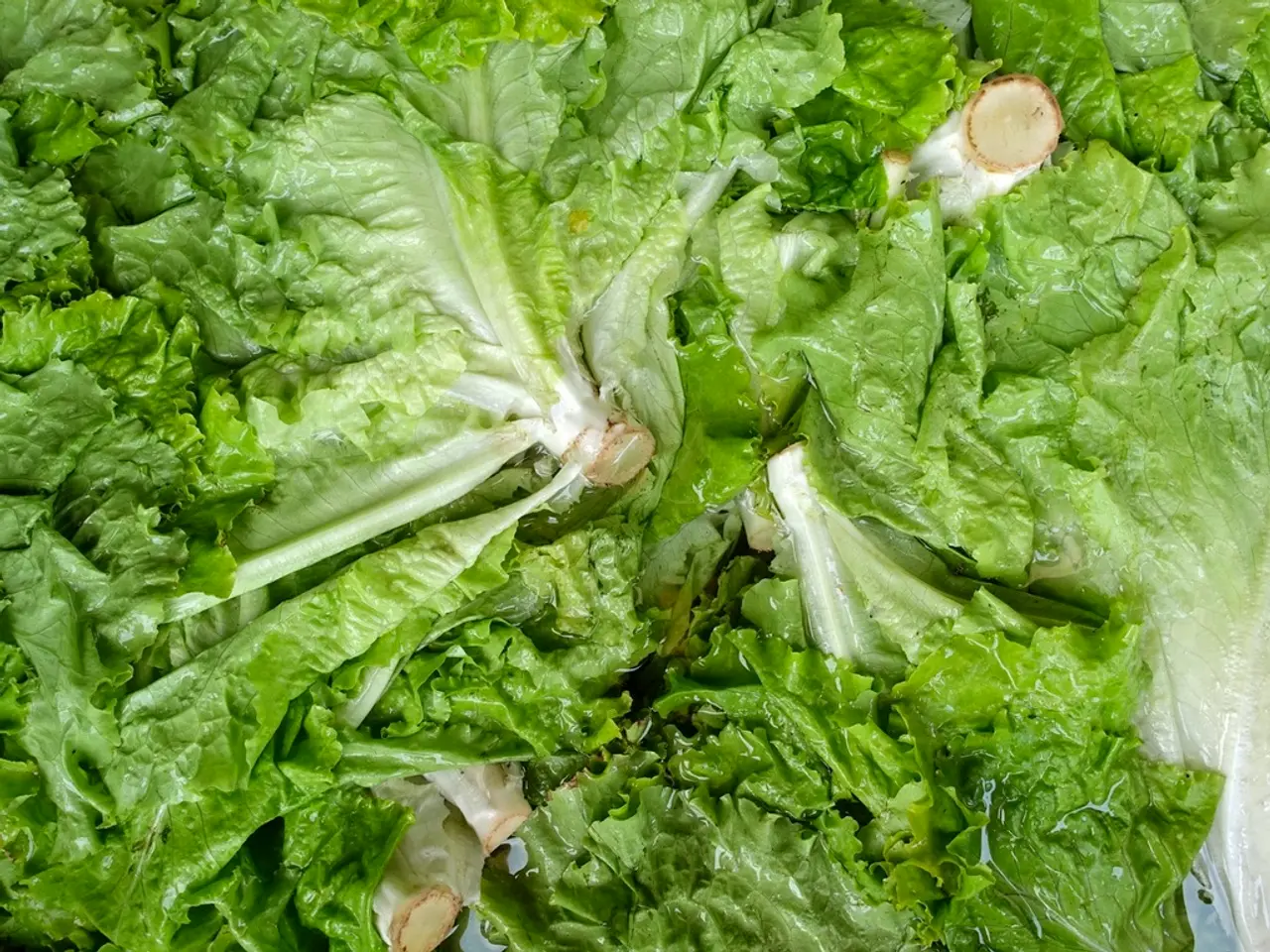Infestation of Powdery Mildew in Greenhouse-Cultivated Lettuce
In the controlled environment of greenhouses, powdery mildew can pose a significant challenge to the growth of lettuce during fall and winter. To manage this fungal disease effectively, a combination of recommended fungicides, environmental management, and resistant plant selections is essential.
- Fungicides
Employ fungicides specifically labeled for powdery mildew control, focusing on those with preventive and curative abilities. Examples include potassium bicarbonate-based products like "2 CARB," which acts as a contact fungicide effective against powdery mildew. Organic fungicides such as neem oil, sulfur-based products (e.g., Cosavet-DF Edge Sulfur), and horticultural oils (e.g., Monterey Horticultural Oil) are also commonly recommended. Always follow label instructions carefully.
- Environmental Control
- Temperature and Humidity: Maintain greenhouse temperatures between 40°F and 70°F (4°C to 21°C), optimal for lettuce growth but less favorable to powdery mildew. Control humidity to remain between 50-70%; avoiding excessive humidity that can promote fungal growth.
- Air Circulation and Ventilation: Ensure good air circulation by using vents, fans, or natural airflow to reduce humidity and prevent stagnant conditions favourable to mildew.
- Sanitation and Cultural Practices: Regularly prune or remove affected leaves, avoid overhead watering to reduce leaf wetness, and practice crop rotation to reduce pathogen buildup.
- Plant Selection
Choose powdery mildew-resistant lettuce varieties if available, as planting resistant cultivars is a highly effective preventive measure.
- Natural and Cultural Aids
Consider natural remedies such as baking soda (1-5 tablespoons per gallon of water), which can help control powdery mildew in an eco-friendly manner. Promote plant health with balanced nutrition and soil health management to increase plant resilience to infections.
Regular monitoring and scouting for disease presence are crucial, especially in sections of the greenhouse with reduced air flow, dense plant canopies, or standing water. Increased air movement within the plant canopy is important in managing powdery mildew. Remember to rotate fungicide products with different modes of action to manage resistance issues.
When detected on plants, treat with a fungicide labeled for powdery mildew management on lettuce, but remember to read the label and follow all guidelines. Lettuce types such as leaf and butterhead show more resistance to powdery mildew than romaine and crisphead lettuces.
The greenhouse environment provides ideal conditions for powdery mildew development on lettuce, with favourable conditions including dense foliage, restricted air flow, and temperatures between 41-86 degrees Fahrenheit (5 to 30 degrees Celsius). The fungus Golovinomyces cichoracearum (formerly Erysiphe cichoracearum) causes powdery mildew on lettuce.
Ideal relative humidity (RH) levels for spore germination are 95 to 98 percent, but the disease can develop at RH as low as 50 percent. Free water on plant surfaces prevents spore germination and infection for powdery mildew.
It's important to note that products labeled for control of powdery mildew on ornamentals may not be labeled for use on greenhouse vegetables, and vice versa. Examine both the upper and lower side of leaves as powdery mildew forming on the underside of leaves can go undetected and move quickly through the greenhouse before it is noticed.
Figure 1 shows powdery mildew on lettuce leaves, characterised by white powdery growth on leaves and stems. Older leaves and mature plants are typically affected first, limiting growth and yield.
By integrating these fungicide treatments, environmental controls (temperature, humidity, and ventilation), and selecting resistant varieties, you can achieve effective powdery mildew management on lettuce grown in greenhouses during colder seasons.
Read also:
- Explored the Popular Health Assessment with a Queue of 100,000 Aspiring Participants - Here's My Unadulterated Opinion
- Hearing impairment condition: Recognizing symptoms and management approaches
- Signs of Cataracts Emergence: Impact on Vision and Further Details
- Thyroid Cancer Type: Papillary (PTC) - Symptoms and Further Details





